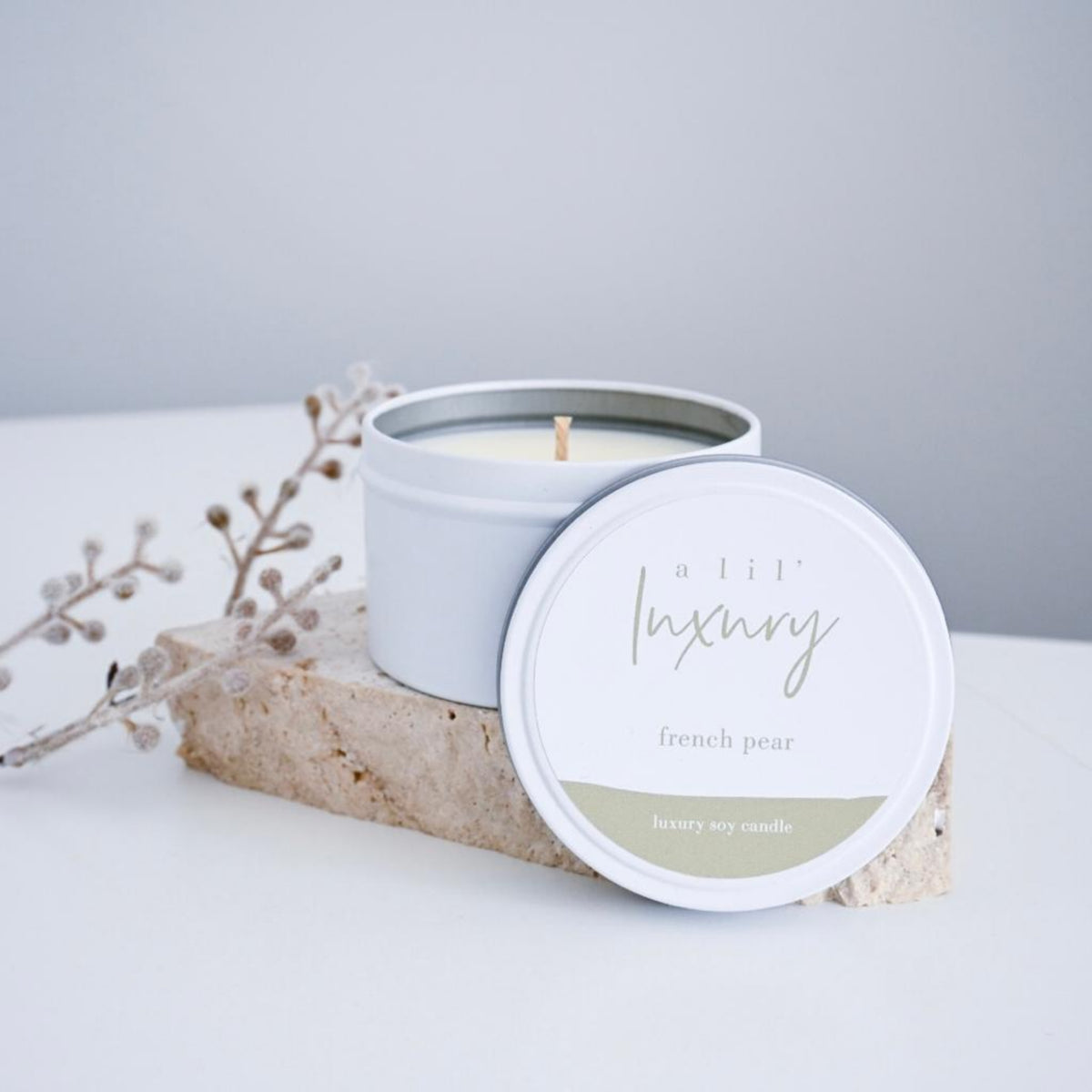Develop Atmosphere with Handcrafted Soy Wax Candles and Home Fragrance
From Wick to Wax: Comprehending the Chemistry Behind Soy Wax Candles and Their Environmental Impact
As we brighten our areas with the cozy glow of candle lights, there lies a realm of complex chemistry behind the seemingly straightforward act of lighting a soy wax candle. The selection in between soy and paraffin wax expands beyond plain aesthetics, diving into the world of environmental impact and the extremely composition of the products. Understanding the molecular framework of soy wax and its burning procedure clarifies the emissions launched right into our environments. Join us as we decipher the clinical complexities behind soy wax candle lights and explore their ramifications on our setting.
Soy Wax Vs. Paraffin Wax
When comparing soy wax and paraffin wax for candle production, it is important to comprehend the unique features and advantages of each product. Soy wax is a natural, sustainable resource originated from soybean oil, making it biodegradable and green - soy wax candles. On the other hand, paraffin wax is a result of oil refining, which raises concerns about its environmental impact and sustainability
Soy wax candles burn cleaner and release much less soot compared to paraffin wax candles, making them a healthier choice for indoor air quality. In addition, soy wax has a reduced melting point, permitting a longer-lasting candle that disperses fragrance extra effectively. Paraffin wax, on the various other hand, often tends to melt faster and less cleanly, possibly launching damaging chemicals into the air.
From a sustainability perspective, soy wax is preferred for its biodegradability and eco-friendly sourcing, straightening with the expanding consumer preference for environmentally conscious items. While paraffin wax has actually been a standard choice in candle making as a result of its price and convenience of usage, the change in the direction of environment-friendly options like soy wax is gaining momentum in the industry.
Chemical Make-up of Soy Wax

Burning Refine in Soy Candles
The chemical make-up of soy wax straight affects the combustion process in soy candle lights, influencing variables such as melt time, fragrance release, and ecological influence. When a soy candle is lit, the heat from the fire thaws the wax near the wick. This fluid wax is then formulated the wick due to capillary action. As the fluid wax gets to the flame, it undergoes and vaporizes combustion. The burning procedure entails the vaporized hydrocarbons in the wax responding with oxygen in the air to produce warmth, light, water vapor, and co2.
The combustion effectiveness of soy candle lights is affected by the purity of the soy wax and the high quality of the wick. In addition, soy wax candles have a lower ecological influence contrasted to paraffin candles due to their sustainable and eco-friendly nature.

Ecological Benefits of Soy Wax

Taken into consideration a lasting choice to traditional paraffin wax, soy wax provides significant ecological advantages that make it a prominent option amongst eco-conscious customers. One considerable advantage of soy wax is its sustainable sourcing. Soy wax is stemmed from soybean oil, which is predominantly cultivated in the USA. The farming of soybeans helps sustain neighborhood farmers and lowers the dependence on non-renewable nonrenewable fuel sources used in paraffin wax manufacturing. Additionally, soy wax is biodegradable, meaning it damages down normally without launching dangerous toxins into the setting. This particular makes soy wax candles a more eco-friendly choice compared to paraffin wax candles, which are made from oil, a non-renewable source. Moreover, soy wax burns cleaner and creates much less residue than paraffin wax, adding to far better interior air quality and decreasing the demand for cleaning and upkeep. Overall, the ecological benefits of soy wax straighten with the growing need for environment-friendly and lasting products in the marketplace.
Recycling and Disposal Factors To Consider
Recycling and appropriate disposal of soy wax candle lights play an essential duty in keeping ecological sustainability and reducing waste in areas and homes. The first step is to make sure that the candle light has actually burned completely when it comes to reusing soy wax candle lights. This can be accomplished by enabling the candle light to shed till the wick is no much longer useful, image source and afterwards letting the remaining wax cool and solidify. Once the wax has solidified, it can be meticulously gotten rid of from the container.

In regards to disposal, if recycling is not a choice, soy wax candles are biodegradable and can be securely taken care of in the majority of family waste systems. It is always recommended to examine with regional reusing facilities or waste management solutions for specific standards on candle disposal to ensure correct handling and ecological protection.
Verdict
To conclude, the chemistry behind soy wax candles reveals their ecological advantages over paraffin wax candles. Soy wax, derived from soybean oil, burns cleaner and creates less soot when contrasted to paraffin wax. The anchor combustion procedure in soy candles is a lot more reliable, causing a longer and a lot more also burn. In addition, soy wax is renewable and eco-friendly, making it a more lasting selection for candle manufacturing. Reusing and proper disposal of soy wax candle lights additionally contribute to their ecological effect.
When contrasting soy wax and paraffin wax for candle production, it is necessary to recognize the distinctive characteristics and advantages of each material (crystal soy candles).Soy wax candles shed cleaner and produce much less residue compared to paraffin wax candles, making them a much healthier selection for indoor air top quality.Considered a why not check here sustainable alternative to conventional paraffin wax, soy wax offers notable ecological benefits that make it a popular option amongst eco-conscious customers. Soy wax burns cleaner and produces much less soot than paraffin wax, adding to far better indoor air top quality and lowering the demand for cleaning and maintenance.In final thought, the chemistry behind soy wax candle lights exposes their environmental advantages over paraffin wax candles